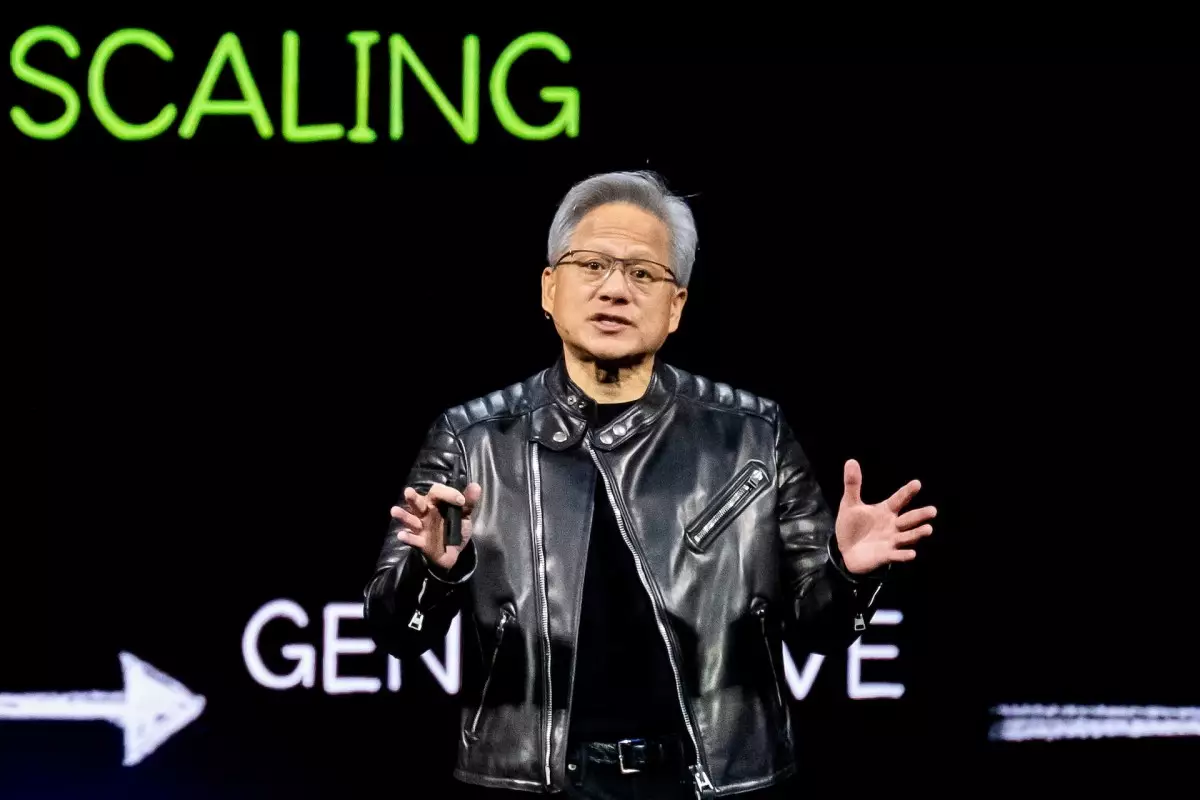Nvidia, once a bastion of innovation rooted primarily in overseas production, has embarked on a transformative journey to bolster its manufacturing capabilities domestically. In an audacious declaration, Nvidia announced that it has secured over a million square feet of manufacturing space in Arizona and Texas, aiming to shift a significant portion of its production into the United States. This move marks a monumental shift in the global semiconductor landscape and emphasizes the strategic importance of American manufacturing in the rapidly growing field of artificial intelligence (AI).
At the forefront of this initiative is the production of Nvidia’s new Blackwell chips, which has already commenced at TSMC’s facilities in Phoenix. Alongside this venture, Nvidia is poised to expand its manufacturing footprint in Texas through partnerships with industry giants like Foxconn in Houston and Wistron in Dallas. The collaborative efforts in Arizona with Amkor and SPIL for packaging and testing operations further underline Nvidia’s commitment to establishing a robust AI chip infrastructure domestically. The anticipated mass production from these sites within the next 12 to 15 months could symbolize a significant resurgence of high-tech manufacturing within U.S. borders.
Meeting Escalating Demand for AI Infrastructure
The global demand for AI infrastructure has been surging, and Nvidia recognizes this imperative. Jensen Huang, the CEO of Nvidia, stated, “The engines of the world’s AI infrastructure are being built in the United States for the first time.” This assertion encapsulates the ambition behind Nvidia’s moves: providing a solution to the staggering demand for AI chips while enhancing the company’s supply chain resilience. Measurable economic benefits are projected, with plans to generate up to half a trillion dollars in AI infrastructure within the U.S. over the next four years.
However, these ambitious plans are not merely an exercise in business strategy; they also carry significant geopolitical ramifications. Nvidia’s proactive approach coincided with fresh trade dynamics and the need for self-reliance in technology production, factors that have gained traction amidst ongoing tensions with China. By relocating manufacturing closer to home, Nvidia not only enhances its operational capabilities but also positions itself advantageously in the global market amidst the backdrop of shifting supply chains.
Political Currents and the Business Landscape
The timing of Nvidia’s announcement intricately ties into the broader narrative of domestic manufacturing, particularly in the semiconductor sector, which has been heavily influenced by political maneuvers. The recent deals to avert export controls on Nvidia’s H20 chip with the Trump administration reveal the intricate interplay between corporate aspirations and government policies. These negotiations point to a wider trend where major tech companies align with government agendas—an “America-first” ethos manifesting as enticing partnerships and hefty capital investments towards U.S.-based facilities.
This echoes similar initiatives by other tech giants, like Microsoft and OpenAI, who have also embraced substantial funding commitments to develop U.S. data centers, actively navigating the burgeoning opportunities presented under the current administration. As the landscape continues to evolve, Nvidia’s strategic positioning may serve as a template for other companies seeking to balance innovation and compliance within a politically charged environment.
Challenges on the Horizon for Domestic Chip Manufacturing
Nevertheless, Nvidia’s bold venture into American manufacturing does not come without significant hurdles. The landscape is fraught with complexities, notably the looming threat of retaliatory tariffs and trade barriers imposed by China, which potentially jeopardize the supply chains essential for producing chips domestically. As the U.S. grapples with these external pressures, the severe shortage of skilled labor for the precision assembly of these sophisticated chips further complicates matters.
Moreover, the impact of the Trump administration’s efforts to roll back the Chips Act casts a shadow of uncertainty over future investments in the semiconductor sector. The Chips Act was designed to stimulate domestic manufacturing through financial support, yet any deliberation over its effectiveness could deter investment from key players in the industry. Therefore, while Nvidia’s aspirations to foster U.S.-based chip production are commendable, they may face formidable headwinds that challenge the sustainability of these initiatives over time.
In an era where technology drives economic and strategic potential, Nvidia’s proactive steps to establish a manufacturing presence in the U.S. encapsulate a pivotal shift. As both companies and governments navigate the complexities of global manufacturing, the stakes are higher than ever in realizing a truly self-sufficient technological future.

